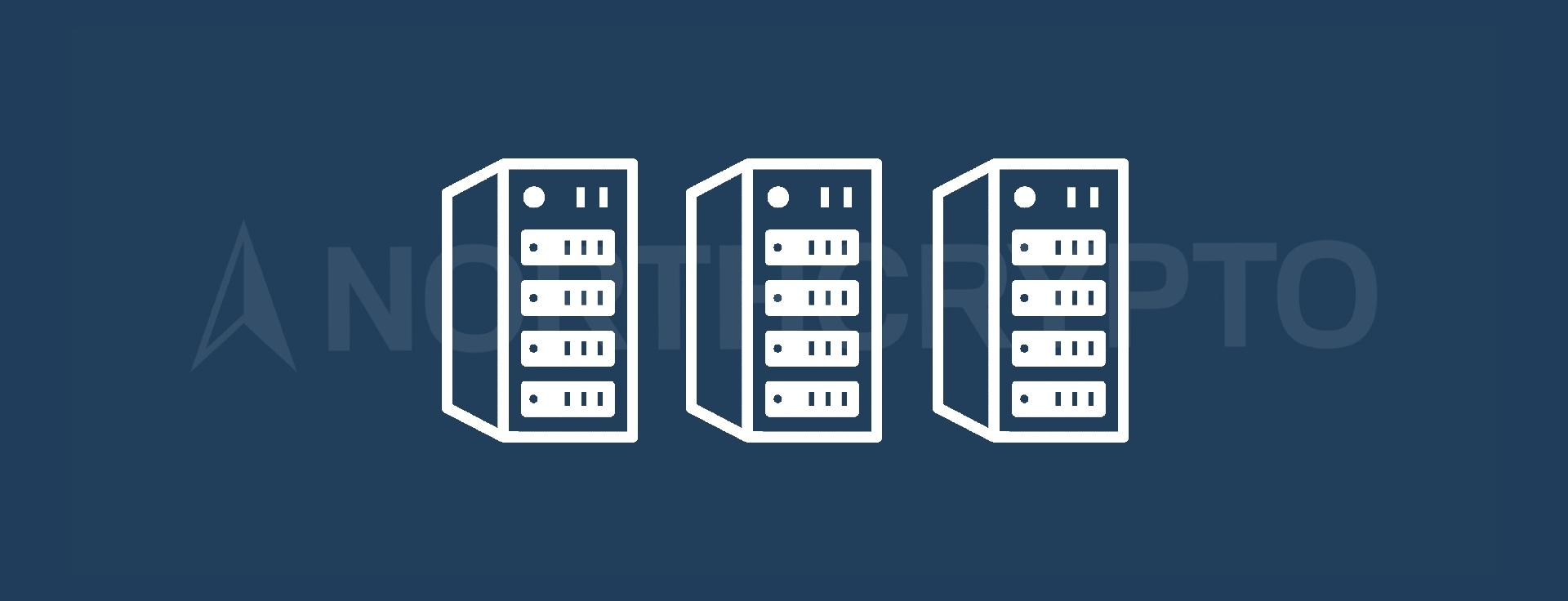What is {{chartFullCurrency}}?
{{chartFullCurrency}}'s price
{{chartFullCurrency}}'s price
{{chartFullCurrency}}'s price
{{chartFullCurrency}}
{{rate}}€
{{changePercent}}%
Buy cryptocurrencies safely & effortlessly
Create an account and start investing to cryptocurrencies with Northcrypto.
Start investingBitcoin is the most popular and best-known decentralized virtual currency in the world. Bitcoin uses blockchain technology where all the money transfers and Bitcoin addresses are open to the public and readable from the public ledger. Bitcoin’s white paper was published in October 2008 by an unknown person or group using the name Satoshi Nakamoto. The first block of Bitcoin was created on January 3rd, 2009. This is also widely accepted as the birthday of Bitcoin.
Bitcoin uses the Proof of Work consensus method. This means that the blockchain maintenance work is done with physical mining machines. The miners assign the computing power of their computers to the Bitcoin Network. Mining is extremely vital to Bitcoin’s network. Without miners, there wouldn’t be a Bitcoin network. The main tasks of mining are to verify the transactions and to create new bitcoins. Miners are rewarded for their work with a block reward for mining a new block and transaction fees for transactions on that block.
Miners are currently awarded with 3,125 new bitcoins per block. The amount of new bitcoins per block gets halved roughly every 4 years (every 210,000 blocks). The last halving took place in April 2024. In the case of Bitcoin, the halving of the mining reward means that fewer new bitcoins enter the market every four years. The halving of Bitcoin is a feature, which is programmed inside the Bitcoin blockchain. The goal of halving is to prevent inflation and keep the total number of bitcoins growing at a predictable rate. The maximum number of bitcoins is 21 million. A bitcoin can be divided down to 8 decimal places. Therefore, 0.00000001 BTC is the smallest amount that can be handled in a transaction.
The history of Bitcoin
Bitcoin is the oldest cryptocurrency in the world. The first block of Bitcoin was mined in January 2009. Bitcoin wasn’t born out of nowhere. It was the result of decades of research. Satoshi Nakamoto succeeded where the cryptocurrency projects that preceded Bitcoin had failed. For the first time, people had access to a digital currency equipped with a truly fully decentralized administration and much-needed scarcity. Scarcity in this case means a predetermined maximum amount of Bitcoin.
Bitcoin is a financial system that is not controlled by centralized operators. Satoshi Nakamoto created Bitcoin at the best possible moment. In 2008 and 2009, the world was shaken by an unprecedented financial crisis. This financial crisis was the result of the reckless monetary policy of central banks. Confidence in the traditional banking system had collapsed and people wanted to find a new kind of monetary system.
There was a real demand for a new kind of monetary system and Bitcoin's popularity began to grow very strongly in the first half of the 2010s. A whole new set of services began to emerge around Bitcoin.
During its history, Bitcoin has also received several different forks, i.e. upgrades. The most famous Bitcoin update is the 2017 SegWit update. The SegWit update improved the capacity of the Bitcoin network by changing the way the network secures bitcoin transactions.
The technology behind Bitcoin
The Bitcoin protocol is built on the blockchain. The term blockchain literally means blocks in a chain. Blockchain is a growing list of records, called blocks, that are linked using cryptography. Each block contains a cryptographic hash of the previous block, timestamp and transaction data. The Bitcoin blockchain is also a public ledger, which means each transaction is visible to anyone.
In the case of Bitcoin, the blockchain is completely decentralized. In a decentralized system, the information is not stored by one single entity. No centralized version of this information exists for hackers to corrupt. In a traditional model, information is stored in a centralized database. In this case, all the information is in the same place. A great example of a centralized system is the banks. They store all of your money, and the only way you can pay someone is by going through the bank.
People’s distrust of centralized information systems is one of the biggest reasons for Bitcoin’s existence. The financial crisis in 2008, demonstrated the enormous need for a fully decentralized digital monetary system. Bitcoin’s blockchain is fully decentralized, which means that it is not under the control of any single party.
Thanks to the large amount of miners and enormous computing power, the Bitcoin blockchain is extremely safe and reliable. The data of the Bitcoin blockchain is distributed all around the world and it is fully secure from hackers. It is also impossible for any single party to get enough computing power to shut down Bitcoin’s blockchain.
Bitcoin as an investment
In recent years, Bitcoin has attracted the attention of investors around the world. Bitcoin can be considered both a payment system and a digital currency. Everyone should remember that traditional currencies like the dollar and the euro lose value over time with inflation.
Unlike traditional currencies, the amount of bitcoins is completely fixed. It is not possible to create more than 21 million bitcoins. Bitcoin should therefore not be confused with traditional currencies, of which there is virtually no limit to the number that can be created. Bitcoin is first and foremost a store of value, which many experts have compared to gold, for example, rather than to traditional currencies.
Compared to other cryptocurrencies, Bitcoin also has a very important advantage on its side. Bitcoin was the first cryptocurrency in the market so it has the first-mover advantage. Most of the cryptocurrency news are Bitcoin-related and bitcoin controls a huge part of the entire market cap of cryptocurrencies. Even today, almost every new cryptocurrency investor starts their journey from Bitcoin.
Sign up now to invest in Bitcoin



